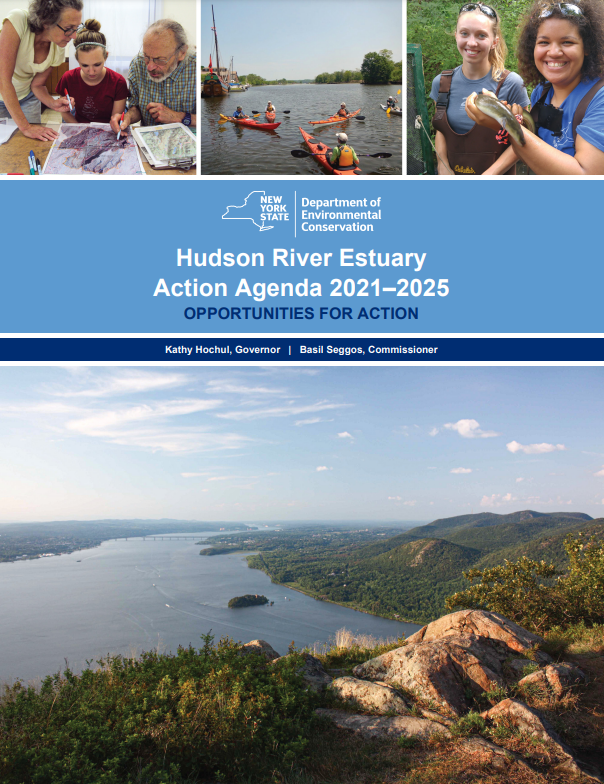 The Hudson River Estuary Program, a program of the New York State Department of Environmental Conservation (NYSDEC), released an updated Action Agenda for 2021-2025 to serve as a conservation and restoration blueprint to guide the work of the Estuary Program and its partners. Community groups and citizens throughout the region provided input for the plan, which proposes collective action by New York State and collaborating stakeholders.
The Hudson River Estuary Program, a program of the New York State Department of Environmental Conservation (NYSDEC), released an updated Action Agenda for 2021-2025 to serve as a conservation and restoration blueprint to guide the work of the Estuary Program and its partners. Community groups and citizens throughout the region provided input for the plan, which proposes collective action by New York State and collaborating stakeholders.
“This Action Agenda outlines New York’s goals for the conservation of the Hudson River estuary and its watershed,” said Basil Seggos, commissioner of the NYSDEC. “It sets a course to address the challenges we face in improving water quality; protecting fish, wildlife, and habitats; and providing access for recreation. It identifies two cross-cutting issues that will affect every aspect of our work—climate change and environmental justice.”
The document is organized around three themes and their associated key benefits. The first theme of a vital river ecosystem includes the benefits of sustainable estuarine fisheries, robust river habitats, and clean Hudson River water. Secondly, a thriving and resilient watershed encompasses healthy tributaries, climate-adaptive communities, and conserved natural areas for wildlife, source water, climate resilience, and scenery. The final theme, people living well with nature, covers an informed and engaged public as well as an accessible Hudson River for people of all ages and abilities.
Each chapter goes into detail for the key benefit at hand, providing goals, 2030 targets, measures of success, strategies and actions, and adaptative management and monitoring sections.
The Hudson River Estuary Program is funded through the New York State Environmental Protection Fund (EPF) in partnership with Cornell University and NEIWPCC.
Learn more about the Hudson River Estuary Program.